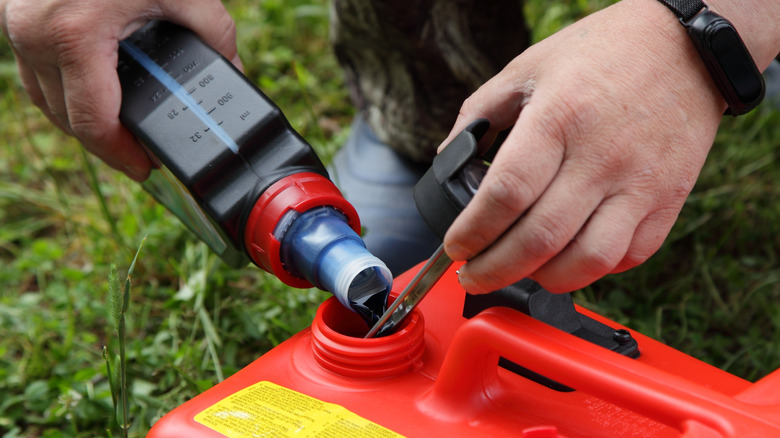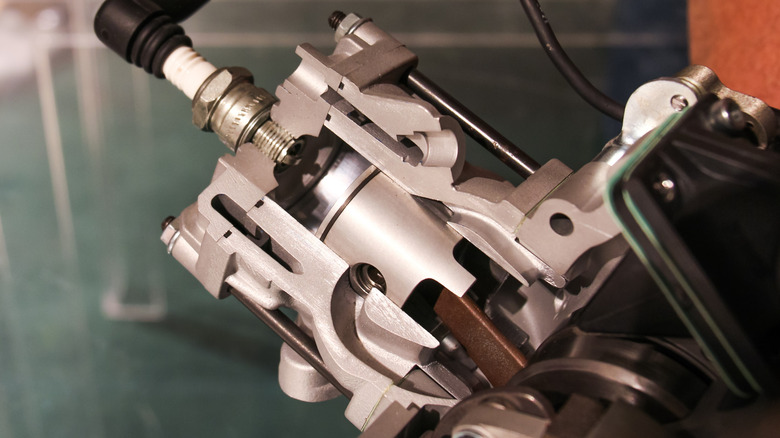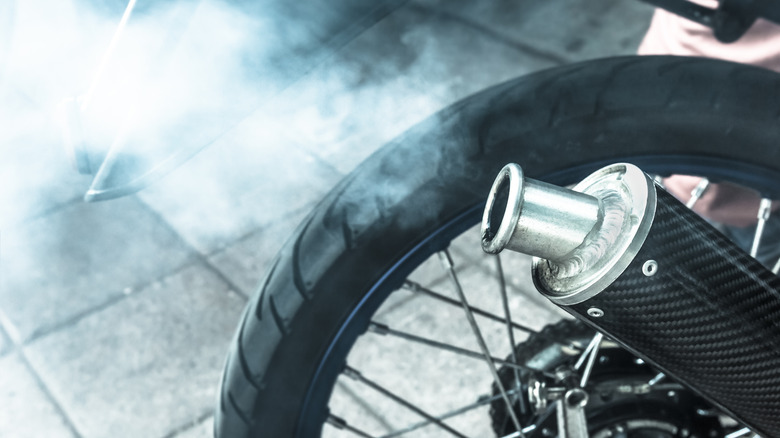Why Two-Stroke Engines Need Oil (Even Though They Don't Need Oil Changes)
Have you ever woken up in the middle of the night worried that you have never, ever changed the oil on your two-stroke lawnmower? Well, you can relax. A two-stroke oil change is like a left-handed screwdriver: they are both non-existent and unnecessary. Which is not to say the oil in a two-stroke engine never gets changed — it's just done differently to than in a four-stroke, and automatically.
On a four-stroke car engine, oil is changed about every 12 months or every 5,000 miles or so — even up to 15,000 miles when using synthetic oils. On a two-stroke engine, however, the oil is "changed" more than 15 times a second — and that's only at idle. When it is up and running at 10,000 rpm, oil is cycled through the two-stroke engine at more than 150 times per second. This is because this special lubricating oil is premixed with the gasoline — which is one of the fundamental differences between a two-stroke and a four-stroke engine.
Unlike a four-stroke car engine, a two-stroke engine uses up the lubricating oil as it goes. The fuel-oil mixture is sucked in through the crankcase and mostly burned up in the combustion chamber before being expelled out through the exhaust as either smoke or vapor. On the other hand, regardless of whether it is gas or diesel, a four-stroke engine burns as little oil as possible. Fresh oil is poured in through the top of the engine, then periodically drained out of the sump underneath.
The ins and outs of a two-stroke engine
In an engine, "stroke" refers to the movement of the piston, either up or down. In a four-stroke engine, the fuel-air mixture is drawn in by the piston as it travels down on the first stroke. The mixture is compressed as the piston travels up on the second stroke, and ignited just before the piston is at the top of the cylinder, which creates the powerful third, downward stroke. The momentum pushes the piston back up, expelling burnt gas on its fourth stroke before the cycle begins again.
A two-stroke engine ignites each time the piston reaches the top of the cylinder — that's twice as often as a four-stroke. The piston draws the fuel, oil, and air mixture in through the crankcase, with the mixture drawn in, ignited, and pumped out of the combustion chamber without the need for a poppet valve train, instead, using small scavenging ports on the cylinder walls, which are opened up and closed off by the movement of the piston itself.
It's far easier to gun the throttle and feel the power than to explain how it works, but in short, this rapid two-stroke cycle means more power with fewer moving parts. On the downside, a two-stroke is noisier, smokier, and more prone to wear than a four-stroke, with its controlled oil distribution through pumps and galleys. And because they work differently, two-stroke and four-stroke engines use different oils, with the low-viscosity two-stroke oil being the more expensive.
With great power comes great responsibility
In bygone days we saw two-stroke engines powering lightweight, plastic-bodied cars like the Trabant across Eastern Europe, and these loud and smoky engines are still used in three-wheeled tuk-tuk taxis across Asia today — mostly because they are so cheap to produce. But with the advent of more efficient, higher-torque, battery-powered electric motors, the days of the two-stroke engine are numbered.
Two-stroke engines are most often used in applications where high power, low cost, and low weight are the prime requirements — for example, in go-karts and trail bikes, as well as gardening tools like chainsaws, brush cutters, and outboard motors. Given that a two-stroke engine can emit up to 25 to 30 percent of its fuel unburned into the water or atmosphere, they are being used less and less as outboards, with the National Park Service banning the use of two-stroke personal watercraft on certain lakes.
The two-stroke engine has a deserved reputation for being environmentally harmful, and this is the main reason why two-stroke engines are being consigned to the dustbin of history. Another reason is their effect on the hip pocket: because two-stroke engines don't use valves, they need the two-stroke oil-and-gasoline mix for lubrication – and burning that special, low-viscosity lubricant along with the gas can get real expensive, real fast — but at least the engine never needs an oil change.


